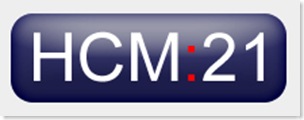 David Creelman has recently conducted another insightful interview with Jac Fitz-enz, founder of the Saratoga Institute and now with Human Capital Source, about what he calls HCM: 21 (HCM for the 21st century).
David Creelman has recently conducted another insightful interview with Jac Fitz-enz, founder of the Saratoga Institute and now with Human Capital Source, about what he calls HCM: 21 (HCM for the 21st century).
The interview describes HCM: 21 as a four-step model for directing HR's actions:
1. "From the big picture to needed capabilities"
The process starts with what I've referred to as strategic workforce planning to identify capabilities (structural, relational and human capital) like the ability to attract talent.
I think this focus on organisational capabilities as the basis for all HR activities is absolutely right.
2. "Improving HR processes by using analytics"
Fitz-enz focuses on analytics and evidence-based management to guide the actions it will need to take, for example whether it needs to improve certain aspects of recruitment.
I think analytics can be very powerful but I also think there's a key role for creativity and imagination based management too.
3. "Integrating actions across HR"
HR specialists all need to work together in a connected way.
I agree, and this is why in my book (I don't think I've posted on it in my blog) I talk about the need to identify strategic programmes which focus on the agreed organisational capabilities and link all HR processes and developments together within these programmes. A focus on outcomes rather than activities also helps.
4. "Better measurement"
Fitz-enz suggests we should focus on leading indicators like engagement, culture and readiness - all relating to intangibles.
"'That is where the game is today' he said, 'it's all about intangibles'. So for example, if retention were an issue the focus should be on leading indicators like engagement, not lagging indicators like how many people left last quarter."
Absolutely - see my Value Chain for details on doing this.
But will it work?
"Fitz-enz says: 'As always what I'm trying to do is just get the thinking going in a different direction.' To me [Creelman] that's the heart of the HCM 21 approach. For sophisticated HR departments it's a way to put a number of important ideas together into a defined process. For less sophisticated departments, environment scanning, capabilities, intellectual capital, analytics, and leading indicators will all be new ways of thinking that will challenge them to do things differently."
I agree with the need to get thinking going in a different direction, and think that HCM: 21 has a lot to say for itself, although I think it overdoes the focus on measurement.
Sophisticated and less sophisticated departments are advised to contact Jac Fitz-enz at source@netgate,net. Or you can contact me at info@strategic-hcm.com.






























Jon, I couldn't agree more with your Jac -- especially on point 4: Better Measurement, especially of intangibles. I've blogged a bit about this myself. When one considers the research: Brookings Institute finding as much as 85% of a company’s expenses may be related to the intangible capital in its people; a Wharton finance professor writing on the
ReplyDelete"statistically and economically significant long-horizon returns to portfolios containing companies with high employee satisfaction.”
We believe establishing a strategic program for frequent recognition of the majority of employees, then linking all recognition to company values and strategy provide precisely this measurement tool that can lead to business advantage. Not only does this method provide a direct link between employee behaviors/performance and reward, but it also effectively and constantly communicates the company strategy and values throughout the organization.
More of my thoughts on intangibles can be found here: http://globoforce.blogspot.com/search?q=intangible
I worry that this approach preaches to the choir; and is overly focused on the HR function as its' starting point. It appears to me that really effective HCM begins with influencing the strategy by the senior-most executives by considering, as Jay Barney suggests with his Resource-based View of the firm (RBV), that existing assets, human and otherwise, that combine to achieve levels of performance nearly impossible for competitors to copy is valuable. Existing "talent pools" are one of many assets to consider in setting strategy, and ultimate firm-level goals; but so are relationships, physical and financial assets.
ReplyDeleteOnce ultimate goals are set, it seems to be the ability of the company to execute strategy is only partially in the HR function- it requires all asssets performing in combination to levels required by customers. Actual people doing work is ultimately how the HR function derives it's value, I suspect.
My $.02.
Matt Barney